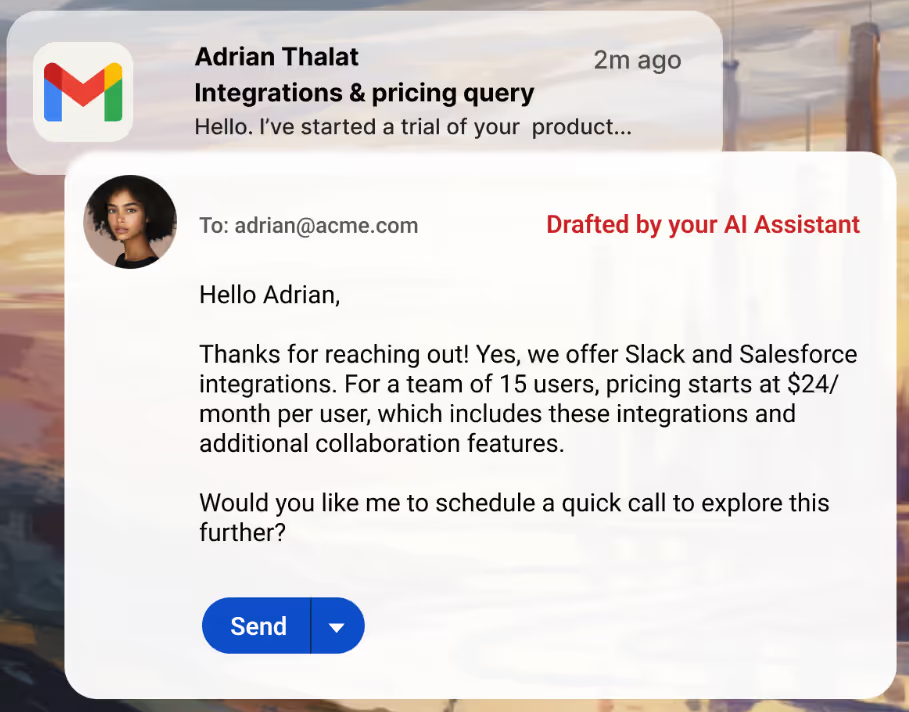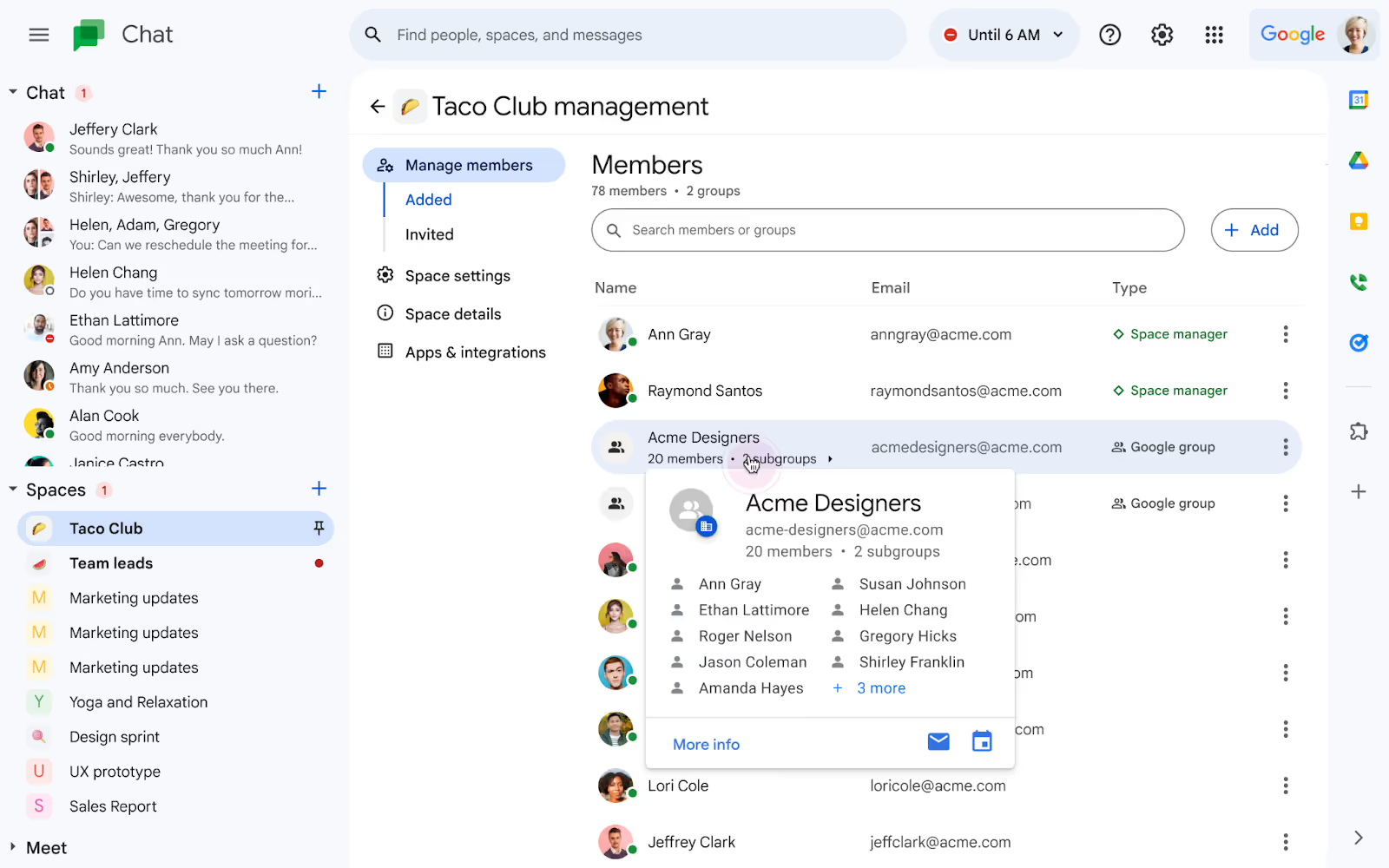HR leaders are under growing pressure to communicate complex, sensitive information with precision. Every message (whether about compensation, compliance, or culture) carries weight. Yet traditional email workflows weren’t built for the scale and sensitivity of today's HR work demands.
When inboxes overflow and responses vary between team members, transparency starts to break down. Smarter email management helps restore structure: routing the right message to the right person, maintaining consistent language, and keeping communication trails visible across the team.
HR Faces Unexpected Challenges in Today’s Complex Times
Modern HR teams are under increasing pressure to stay transparent while managing sensitive and fast-changing situations. A few recent trends highlight just how critical effective communication has become.
Handling layoffs, pay cuts, or restructures with clarity
According to a 2024 Gartner survey, 65% of HR leaders report being involved in some form of restructuring in the past year. Yet most employees say communication during these changes feels unclear or inconsistent. That gap undermines trust and adds emotional strain during already challenging moments.
Explaining new policies and compliance requirements
From hybrid work policies to evolving labor regulations, compliance communication has become a constant task. PwC found that 44% of HR teams struggle to ensure all employees understand policy updates on time, creating a risk of misinterpretation and non-compliance.
Managing employee expectations during hybrid or remote transitions
As organizations adopt flexible work models, HR must bridge the gap between in-office and remote employees. McKinsey reports that 58% of employees still feel disconnected from company decisions in hybrid environments. Consistent email communication remains the foundation for bridging that gap.
Building consistency across large, dispersed HR teams
Many HR departments now operate across regions and time zones. Without shared visibility into communications, responses vary, and small inconsistencies compound into misalignment.
Balancing advocacy for employees with organizational needs
HR professionals often walk a fine line: supporting business decisions while maintaining employee trust. This balance depends on transparent, timely, and well-documented communication.
When employees sense transparency, trust follows. But maintaining that transparency across hundreds of daily emails and sensitive threads requires tools that make clarity scalable.
How Smarter Email Can Help: 4 Important Use Cases for HR
Smarter email tools, powered by AI and team collaboration features, give HR departments a way to maintain openness even during difficult transitions. Here are four common areas where automation and visibility make a measurable difference.
1. Transparent communication during downsizing
Few messages are more difficult to deliver than layoffs or restructuring notices. AI-powered tagging and routing can ensure critical communication is delivered to the right people promptly, without messages slipping through crowded inboxes.
Templates and shared notes also help maintain consistency in tone and language, so employees receive clear, empathetic updates no matter which HR representative they speak to.
2. Onboarding and offboarding with full visibility
Transparency matters not only at the end of employment but from day one. With shared inboxes and collaborative tools, HR can coordinate onboarding and offboarding seamlessly across departments, from IT access and payroll setup to benefits enrollment and feedback collection.
Every action is documented, every step visible, and nothing depends on a single individual’s inbox.
3. Addressing employee grievances faster and more openly
When employees reach out with concerns (whether about workload, compensation, or interpersonal issues) how quickly and clearly HR responds shapes overall trust.
Smarter email workflows can automatically flag sensitive or urgent issues and route them to the right HR partner. Shared notes make it easy to coordinate replies internally before responding, ensuring accuracy and empathy without delays.
4. Sharing benefits and policy updates without confusion
Policy changes are often announced in mass emails that can get lost in crowded inboxes. Smarter tools allow HR to personalize updates, track read receipts, and automate reminders for employees who haven’t yet acknowledged new information.
This creates a transparent loop: employees know what’s expected, and HR knows who’s informed.
Want to see how HR teams can improve visibility across inboxes? Check out 5 Shared Inbox Platforms for HR for practical comparisons.
5 Ways Gmelius Helps HR Stay Ahead of Modern-Day Challenges
Email transparency starts with structure, and that’s where Gmelius helps HR teams transform daily communication into an organized, collaborative system.

1. AI tags automatically surface critical and time-bound communication
HR inboxes are often filled with hundreds of messages a day. Gmelius AI tagging automatically highlights emails that contain sensitive or time-dependent content, like payroll questions, resignation notices, or compliance terms. This ensures urgent matters are never buried under routine requests.
2. AI-generated drafts help reply to employees who value quick responses
Employees expect timely answers, especially on sensitive issues like pay or benefits. With Gmelius AI Reply Assistant, HR teams can generate draft responses aligned with internal policies, tone, and templates, helping teams respond faster without losing quality or accuracy.
3. Shared notes, drafts, and templates allow dispersed HR teams to collaborate smoothly
When HR teams operate across offices or time zones, internal coordination becomes a challenge. Gmelius lets team members add private notes to email threads, co-edit drafts, and use shared templates, ensuring every employee gets a consistent, policy-compliant response regardless of who replies.
4. Kanban boards turn HR program discussions into projects, right inside email
From training initiatives to employee engagement programs, HR projects often begin as email threads. Gmelius transforms these threads into Kanban boards, allowing teams to track tasks, assign responsibilities, and monitor progress directly from Gmail.
This bridges the gap between communication and execution, giving HR full visibility into ongoing priorities.
5. Advanced automation rules execute timely action without manual work
Routine HR processes, such as acknowledgment emails, reminders, or follow-ups, shouldn’t depend on manual effort. Gmelius automation rules let teams trigger actions automatically: labeling, assigning, or closing threads based on conditions like keywords or time elapsed.
This reduces administrative overhead and ensures nothing important falls through the cracks.
Why Transparent HR Starts in the Inbox
When employees lose trust in how communication is handled, they disengage. That loss of trust often starts small. a delayed email, a missing update, or an inconsistent explanation. Over time, it compounds into skepticism about leadership and company direction.
Managing the HR flow with intelligence and collaboration ensures clarity doesn’t depend on individual memory or manual sorting.
Gmelius gives HR departments the structure to stay transparent even under pressure through automation, shared visibility, and AI-assisted communication. It turns everyday email into a reliable, auditable, and scalable system for trust-building.
When communication becomes organized and transparent, HR can move beyond damage control and focus on what truly drives engagement: meaningful relationships with employees.
Try Gmelius today and see how smarter email can help your HR team stay clear, consistent, and connected, even in difficult times.
.avif)



.avif)


.avif)
.avif)